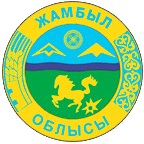Kaufman Tulip is the second most important among the Kazakhstani species; it is the ancestor of more than 200 cultivars that were united in a separate one of 15 classes of cultural tulips. It was described by E.L.Regel in 1877 from the territory of Uzbekistan. It was named in honor of K.P. Kaufman who was the Governor-General of the territory of Turkistan. In late 60s of the XIX century he invited scientists to participate in the study of the nature of Turkestan. This species is widespread only in the mountains of the Western Tien-Shan (from the Ugam ridge to the western part of the Kyrgyz Alatau) and Karatau, and outside our country - in the border areas of Uzbekistan and Kyrgyzstan.
It grows mainly on meadow slopes, often among bushes and apple forests from the lower to the upper belt of the mountains. It differs with a large polymorphism according to the general habit, shape and color of the flower. In some gorges of the Ugam Range there are about 10 different forms that are noted in close proximity. In these places it propagates vegetatively with the help of stolons (special outgrowths of the underground part of the stem) which put the daughter bulbs in different directions. For this reason, each form forms thick, isolated, colorful groups that look like a huge carpet of lemon yellow, white, dark yellow, orange, carmine, red, charlough and mottled spots. Against the background of shining snow-white peaks such glades look absolutely fantastic.
It is very valuable because of its early and long flowering - from the end of March in the lowlands until the end of June or even the beginning of July in the upper belts of the mountains. It is also interesting with the variety of the shape of the flower - from cup-shaped or goblet to star-shaped with pointed or rounded tepals. In wild it often hybridizes with the Greig tulip. It grows well in a culture where seedlings bloom for the first time in the fifth year of life. Like the previous species it is listed in the Red Book of Kazakhstan. It is protected on the territory of Aksu-Zhabaglinsky and Karatau reserves, in national parks Sairam-Ugam and Syrdarya-Turkestan, in the botanical reserve "Berkara".















